Kampala city is the capital and commercial center of Uganda. It is located in the central region of Uganda, a few miles off the shores of Lake Victoria and 37kms away from the Entebbe airport (the main gateway to Uganda). Kampala is made up of 7 main hills – Makerere, Mulago, Kololo, Mengo, Kibuli, Old Kampala and Rubaga. It was first called the “Kasozi Ka Impala” by the Buganda people because it was a natural sanctuary for impalas. The name was later changed to Kampala by the British colonialists for easy pronunciation.
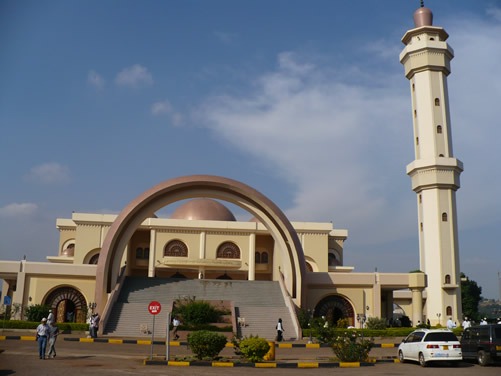 Before, during and after the colonial rule, a lot happened in Kampala that shaped its future. Even before the colonialists came, Kampala was the center of all Buganda kingdom activities. It was a commercial center and a great hunting ground for the Kings (Kabakas) of Buganda. When the first white explorers arrived, they first settled there before going to other parts of Uganda. As the largest Kingdom in Uganda, all foreigners (Arab traders, missionaries, explorers and colonialists) that had interest in Uganda had to first reach out to the Kabaka of Buganda. Because of this, all businesses and modern ideas started in Kampala before it went to other places and it is why the city developed so rapidly to become the capital and commercial city of Uganda. You may also be interested in the top things to do in Entebbe or car hire services in Kampala.
Before, during and after the colonial rule, a lot happened in Kampala that shaped its future. Even before the colonialists came, Kampala was the center of all Buganda kingdom activities. It was a commercial center and a great hunting ground for the Kings (Kabakas) of Buganda. When the first white explorers arrived, they first settled there before going to other parts of Uganda. As the largest Kingdom in Uganda, all foreigners (Arab traders, missionaries, explorers and colonialists) that had interest in Uganda had to first reach out to the Kabaka of Buganda. Because of this, all businesses and modern ideas started in Kampala before it went to other places and it is why the city developed so rapidly to become the capital and commercial city of Uganda. You may also be interested in the top things to do in Entebbe or car hire services in Kampala.
Most of the tourist attractions in Kampala are related to events that occurred in the Buganda Kingdome before, during and after colonial rule. Kampala city is therefore the best place to go to if one is interested in cultural and historical tourism. Other than the historical sites, there are also other interesting modern attractions that attract tourists while in Kampala. They include new establishments like shopping malls, religious sites, recreation centers, political installments, restaurants, bars and discotheques that have been put in place as Uganda caught up with modern trends. The tourist attractions in Kampala today is therefore a mixture of natural, historical, cultural and political sites. Let’s look at each of them: –
Things to do in Kampala
The Gadhafi mosque: This is the main Muslim shrine in Uganda. It is where the Uganda Muslim supreme council headquarters (an organization responsible for Islamic affairs in Uganda) are located. The mosque was formerly known as the old Kampala main mosque and was built by Uganda’s president Idi Amin Dada in 1972. In 2007, the mosque underwent a major renovation to make it the architectural marvel it is right now thanks to the generous funding by the late Colonel Muammar Gadhafi of Libya. Upon its completion, it was named after him. While at the Gadhafi mosque, the visitors take a tour around the imposing structure with the help of a Sheik. As he leads visitors around the building, he shares with them information about the mosque and its history. A tour of the mosque is incomplete without visiting the minaret for one of the bests views of Kampala city and its buildings.
Kibuli Mosque: This is the second most popular mosque in Uganda after the Gadhafi mosque. This mosque is located in Kibuli, an area with the largest population of Muslims in Kampala. Kibuli mosque is  said to be the place that nurtures most of the prominent Sheiks in Uganda. The mosque has the best scholars of Islam in the country. It has an attachment to the royal family of Buganda kingdom when you consider that it was the Buganda Prince Badru Kakungulu who donated the land on which it is built. The Prince is considered one of the grandfathers of the Islamic faith in the country and for that reason is highly revered among Muslims in Uganda. If you are a tourist interested in learning about the history of Islam in Uganda, Kibuli mosque is the place to go to.
said to be the place that nurtures most of the prominent Sheiks in Uganda. The mosque has the best scholars of Islam in the country. It has an attachment to the royal family of Buganda kingdom when you consider that it was the Buganda Prince Badru Kakungulu who donated the land on which it is built. The Prince is considered one of the grandfathers of the Islamic faith in the country and for that reason is highly revered among Muslims in Uganda. If you are a tourist interested in learning about the history of Islam in Uganda, Kibuli mosque is the place to go to.
Bulange (the Buganda parliament building): This is where the Lukiiko or parliamentary meetings of the Buganda kingdom are conducted. It is located on Namirembe Hill, a kilometer away from the 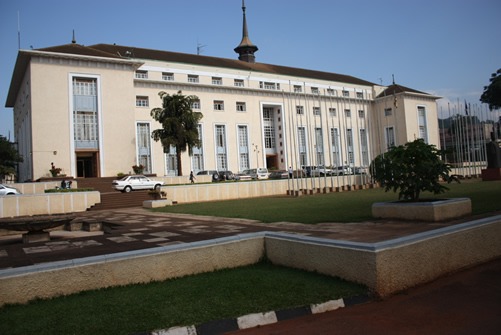 Kabaka’s palace. Buganda kingdom was relatively well organized even before the first white settlers arrived. At first, their administrative meetings were conducted under a large tree in the palace before it changed to a large grass thatched structure. During the colonial era, a big building was set up at Namirembe Hill (outside the palace) by Indian builders under the instructions of the then prime minister of Buganda, Sir Apollo Kaggwa. As time went on, the Kabaka of Buganda Mutesa II renovated it to its current state. While at Bulange, visitors get an opportunity to understand how the Buganda kingdom is governed.
Kabaka’s palace. Buganda kingdom was relatively well organized even before the first white settlers arrived. At first, their administrative meetings were conducted under a large tree in the palace before it changed to a large grass thatched structure. During the colonial era, a big building was set up at Namirembe Hill (outside the palace) by Indian builders under the instructions of the then prime minister of Buganda, Sir Apollo Kaggwa. As time went on, the Kabaka of Buganda Mutesa II renovated it to its current state. While at Bulange, visitors get an opportunity to understand how the Buganda kingdom is governed.
Lubiri Mengo (Kabaka’s palace): Lubiri is the main palace of the king of Buganda. It is located on Mengo hill hence offering great views of Kampala city. Lubiri used to be a fairytale place until turmoil erupted during President Milton Obote’s regime in 1960s. Ugandan troops led by the army general (Idi 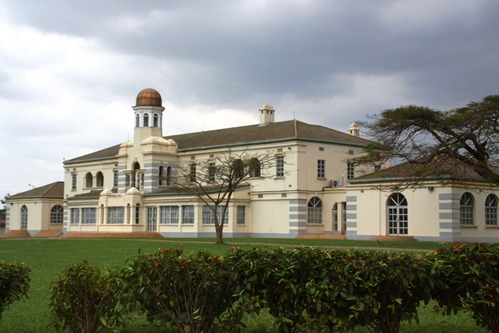 Amin Dada) and under the orders of Milton Obote attacked the palace and forced the Kabaka into exile in Britain. Obote and the Kabaka had a power struggle going on for some time. The King of Buganda was president of Uganda but with limited power while Obote was given more power as a prime minister by the constitution. In the later years, Idi Amin succeeded Obote and used the palace as a torture chamber for people who were against his dictatorial regime. It is said that hundreds of people were tortured to death in the Lubiri by Amin. Because of that bad past, the current Kabaka of Buganda no longer uses it as his actual home though but it remains the official and historical palace of the kings of Buganda. Most of its structures are out of reach to tourists but Amin’s torture chamber is open for tourism.
Amin Dada) and under the orders of Milton Obote attacked the palace and forced the Kabaka into exile in Britain. Obote and the Kabaka had a power struggle going on for some time. The King of Buganda was president of Uganda but with limited power while Obote was given more power as a prime minister by the constitution. In the later years, Idi Amin succeeded Obote and used the palace as a torture chamber for people who were against his dictatorial regime. It is said that hundreds of people were tortured to death in the Lubiri by Amin. Because of that bad past, the current Kabaka of Buganda no longer uses it as his actual home though but it remains the official and historical palace of the kings of Buganda. Most of its structures are out of reach to tourists but Amin’s torture chamber is open for tourism.
The Kabaka’s Lake: The Kabaka’s Lake is the only man-made lake in Uganda and the largest in Africa. It is about 2kms long and 200ft deep. The Lake is located in Ndeeba, a suburb on the slopes of Mengo 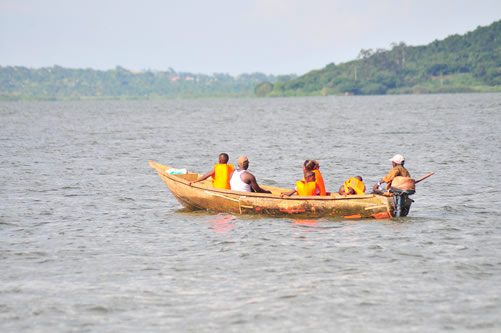 hill. Kabaka Mwanga of Buganda decided to create the lake as the shortest route to the leisure island Mulungu (Munyonyo) in Lake Victoria. It was also used by the royals for swimming, boating racing and fishing. Mwanga is said to also have carried out his private meetings on this lake too. The Lake was to also act as an escape route through Lake Victoria in case the Kabaka was attacked by his enemies. Unfortunately, the two lakes never joined because work came to halt when inter-religious wars broke out in 1880s leading to the exile of Kabaka Mwanga II. The lake has now turned to be sightseeing and bird watching spot for tourists.
hill. Kabaka Mwanga of Buganda decided to create the lake as the shortest route to the leisure island Mulungu (Munyonyo) in Lake Victoria. It was also used by the royals for swimming, boating racing and fishing. Mwanga is said to also have carried out his private meetings on this lake too. The Lake was to also act as an escape route through Lake Victoria in case the Kabaka was attacked by his enemies. Unfortunately, the two lakes never joined because work came to halt when inter-religious wars broke out in 1880s leading to the exile of Kabaka Mwanga II. The lake has now turned to be sightseeing and bird watching spot for tourists.
Kasubi Tombs: These tombs are located on Kasubi hill (northwest of Kampala city). They are a world heritage site under UNESCO because of their historical and cultural significance. The tombs are the 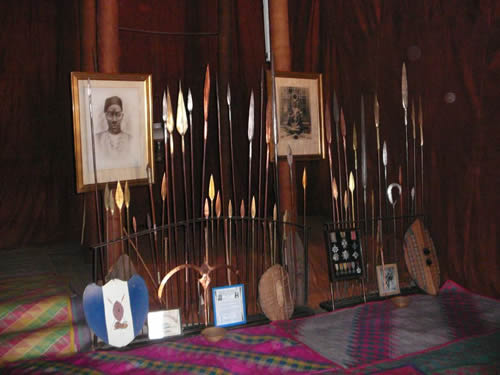 burial place for the royal family of Buganda kingdom. The tombs are just among the 31 that have been established in other places by the Buganda kingdom since the 13th century. The Kasubi tombs are unique compared to others because four kings of Buganda are buried in them – Muteesa I, Mwanga II, Daudi Chwa II and Sir Edward Muteesa II. This is contrary to the original traditional values and norms of Buganda where every king was rested in a separate tomb. In 2010, some sections of the tombs were burnt into ashes forcing them to be closed to visitors. However, the restoration of the burnt structures commenced in 2014 and the remains of the past Kabakas were reinstated. We hope that the tombs will be open to tourists soon. Read more about the Kasubi tombs in our article about the tourist attractions in Uganda.
burial place for the royal family of Buganda kingdom. The tombs are just among the 31 that have been established in other places by the Buganda kingdom since the 13th century. The Kasubi tombs are unique compared to others because four kings of Buganda are buried in them – Muteesa I, Mwanga II, Daudi Chwa II and Sir Edward Muteesa II. This is contrary to the original traditional values and norms of Buganda where every king was rested in a separate tomb. In 2010, some sections of the tombs were burnt into ashes forcing them to be closed to visitors. However, the restoration of the burnt structures commenced in 2014 and the remains of the past Kabakas were reinstated. We hope that the tombs will be open to tourists soon. Read more about the Kasubi tombs in our article about the tourist attractions in Uganda.
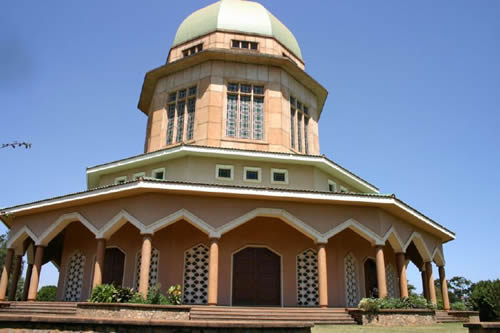 The Baha’i Temple: This is the only temple of the Baha’i faith in Africa. It is a beautiful but peculiar structure established on Kikaya hill on the outskirts of Kampala. The Baha’i faith originated from Iran/Persia. It teaches the highest levels of humanity. While on a tour of the temple, tourists can get to understand what the religion entails. The environment inside the temple is soothing if not charming. The outside is equally beautiful with large and well-manicured gardens. It is prohibited to take photos inside the temple because it is against the faith’s virtues and rituals. The Baha’i temple is open to the public from 8:00am to 6:00pm everyday but the main prayer service is on Sunday.
The Baha’i Temple: This is the only temple of the Baha’i faith in Africa. It is a beautiful but peculiar structure established on Kikaya hill on the outskirts of Kampala. The Baha’i faith originated from Iran/Persia. It teaches the highest levels of humanity. While on a tour of the temple, tourists can get to understand what the religion entails. The environment inside the temple is soothing if not charming. The outside is equally beautiful with large and well-manicured gardens. It is prohibited to take photos inside the temple because it is against the faith’s virtues and rituals. The Baha’i temple is open to the public from 8:00am to 6:00pm everyday but the main prayer service is on Sunday.
Uganda Martyrs Shrines in Namugongo: This is the most popular and iconic religious site in Uganda due to its sad history. It is located in Namugongo, a few miles off the road leading to Jinja from Kampala. After the missionaries had settled in Buganda kingdom for some time, Kabaka Mwanga II of 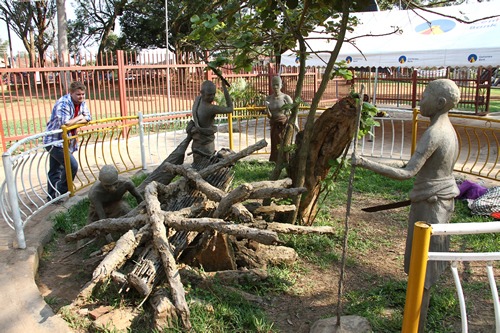 Buganda became jealous of their influence over his pages/subjects. Although he had allowed Christianity and Islam to thrive, he now saw them as a threat to his leadership. In June 1886, he ordered the death of any of his subordinates who had disobeyed his orders to quit foreign religion. The killings occurred in various places in Buganda kingdom but the most notable one occurred in Namugongo. Shrines were built by Roman Catholics, Protestants and Moslem to commemorate the religious martyrs. The 3rd of June is marked as a historical and important day in Uganda and in many African countries to remember the sacrifices of the Uganda Martyrs. Every year, over 1 million people travel from around the world to attend prayers in remembrance of the Uganda Martyrs at the Namugongo shines. It is a public holiday in Uganda with the catholic celebrations overshadowing all others. Three Popes have visited the catholic shrine in Namugongo.
Buganda became jealous of their influence over his pages/subjects. Although he had allowed Christianity and Islam to thrive, he now saw them as a threat to his leadership. In June 1886, he ordered the death of any of his subordinates who had disobeyed his orders to quit foreign religion. The killings occurred in various places in Buganda kingdom but the most notable one occurred in Namugongo. Shrines were built by Roman Catholics, Protestants and Moslem to commemorate the religious martyrs. The 3rd of June is marked as a historical and important day in Uganda and in many African countries to remember the sacrifices of the Uganda Martyrs. Every year, over 1 million people travel from around the world to attend prayers in remembrance of the Uganda Martyrs at the Namugongo shines. It is a public holiday in Uganda with the catholic celebrations overshadowing all others. Three Popes have visited the catholic shrine in Namugongo.
Namirembe Cathedral: The cathedral is the main worship place for the Protestants (Anglican faith). It is situated in on Namirembe hill which overlooks Kampala city. It was built in 1890 and is hence the oldest Anglican cathedral in Uganda. The cathedral has undergone renovations and other changes with 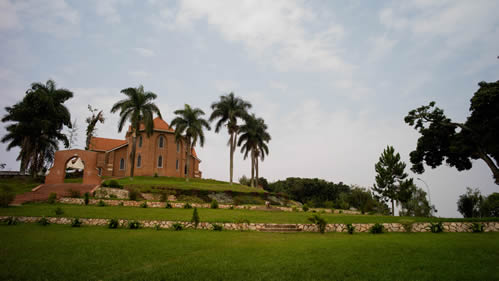 the current structure built in 1919. Namirembe Cathedral is the main office and home of the archbishop of the church of Uganda. The tombs and remains of Bishop Hannington and Ernest Cook who were killed on the directives of Kabaka Mwanga in 1885 are also found at the Cathedral. These were great personalities in the spread of the Anglican faith in Uganda. Ernest cook was a nephew to Sir Albert Cook who helped build Mengo hospital. A tour around the large cathedral evokes memories of the time when Christianity first spread to Uganda and is an opportunity to pray for the souls of many departed missionaries who are laid to rest in the burial grounds. The cathedral also has an exquisite guesthouse and restaurant where the visitors can stay and dine.
the current structure built in 1919. Namirembe Cathedral is the main office and home of the archbishop of the church of Uganda. The tombs and remains of Bishop Hannington and Ernest Cook who were killed on the directives of Kabaka Mwanga in 1885 are also found at the Cathedral. These were great personalities in the spread of the Anglican faith in Uganda. Ernest cook was a nephew to Sir Albert Cook who helped build Mengo hospital. A tour around the large cathedral evokes memories of the time when Christianity first spread to Uganda and is an opportunity to pray for the souls of many departed missionaries who are laid to rest in the burial grounds. The cathedral also has an exquisite guesthouse and restaurant where the visitors can stay and dine.
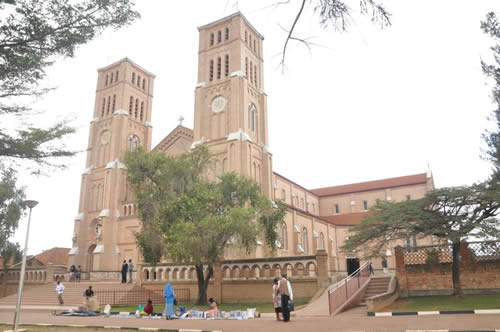 Rubaga Cathedral: This is also known as St. Mary’s Cathedral Rubaga and is located on Lubaga hill. The hill used to be the palace of Kabaka Mutesa I but there was a fire outbreak which led to its destruction forcing the Kabaka desert it and switch to Mengo hill. Interestingly, it was Kabaka Mwanga II who donated it to the French catholic missionaries in 1889. The construction of the current structure started in 1914 and was completed in 1925. The remains of Archbishop Joseph Kiwanuka can also be seen at the cathedral. Kiwanuka was the first African bishop. Anyone who wishes to know the history and past events of the white fathers and the catholic faith in Uganda should visit the Rubaga cathedral.
Rubaga Cathedral: This is also known as St. Mary’s Cathedral Rubaga and is located on Lubaga hill. The hill used to be the palace of Kabaka Mutesa I but there was a fire outbreak which led to its destruction forcing the Kabaka desert it and switch to Mengo hill. Interestingly, it was Kabaka Mwanga II who donated it to the French catholic missionaries in 1889. The construction of the current structure started in 1914 and was completed in 1925. The remains of Archbishop Joseph Kiwanuka can also be seen at the cathedral. Kiwanuka was the first African bishop. Anyone who wishes to know the history and past events of the white fathers and the catholic faith in Uganda should visit the Rubaga cathedral.
Jewish Synagogue and Community Uganda: This Jewish Prayer center is situated Kibuli along Mbogo road in Kibuli. The Jewish faith was introduced in Uganda in 1998 but has now gained a lot of followers. Most of them live in Mbale, a town found in eastern Uganda where they are locally known as the Abayudaya. The Jews believe that the word of God is combined into one book tanakh. God is referred to as Hashem and the leader of the faith is called Rabbi. The Jewish community in Uganda is very tolerant and accept non-members to their worshiping place. The synagogue in Kibuli is worth to visit if you are curious or what to learn more about the Jewish religion.
Gurdwara Ramgarhia Sabha: The main structure of the Gurdwara is located on Khamis Rashid road in old Kampala. This is a Hindu worship center for mostly Indians living in Uganda. Their religion originated in Punjabi Pakistan. They believe in the equality for all people, selfless service to humanity, preaching peace and love and also safeguarding of the weak. Their God is referred to as Waheguru and the leaders of the religion are called Sikh Guru. The followers of this religion are called the Sikhs.
Owino Market: This market is found in an area of Kampala city locally known as down town. The government changed the market name to St. Balikuddembe Market in memory of one of the Uganda martyrs who was killed in the area on the orders of Kabaka Mwanga in the 1880s. However, the name 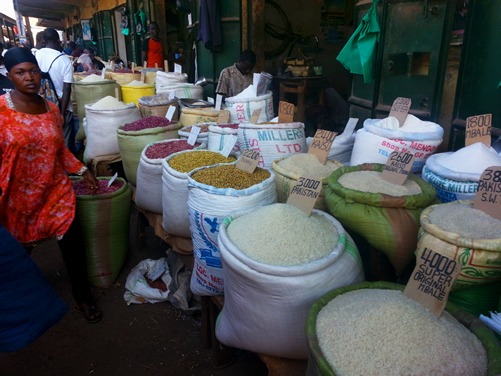 Owino has stuck in people’s mind. It is hard to find a local person referring to the market using its new name. Owino Market is the largest multipurpose market in Kampala and receives over 10,000 people every day. The market was recently renovated with storied buildings to replace most of the poor structures that were in place. Though the structures are still not high end, Owino market has most of the merchandise and grocery one would ever wish to buy in Uganda. The market is the go to place for imported second clothes, bags and shoes. It also has stores for food stuffs like rice, posho, beans, vegetables and fruits. There are other markets in Kampala similar to the Owino and these include Kalerwe, Wandegeya, Nakasero, Kamwokya, Nakawa, Kibuye and Kasubi markets. On visiting any of these markets, one is guaranteed of getting fresh fruits and vegetable at the cheapest price.
Owino has stuck in people’s mind. It is hard to find a local person referring to the market using its new name. Owino Market is the largest multipurpose market in Kampala and receives over 10,000 people every day. The market was recently renovated with storied buildings to replace most of the poor structures that were in place. Though the structures are still not high end, Owino market has most of the merchandise and grocery one would ever wish to buy in Uganda. The market is the go to place for imported second clothes, bags and shoes. It also has stores for food stuffs like rice, posho, beans, vegetables and fruits. There are other markets in Kampala similar to the Owino and these include Kalerwe, Wandegeya, Nakasero, Kamwokya, Nakawa, Kibuye and Kasubi markets. On visiting any of these markets, one is guaranteed of getting fresh fruits and vegetable at the cheapest price.
Reading and literature places: For tourists interested in reading books or Ugandan literature, Kampala has a handful of libraries and book stores. The national library along Buganda road is established and has a collection of books from some of the greatest African authors. Aristoc Booklex is also available and is located on Jinja road. It has other outlets in garden city and Acacia shopping malls.
Craft Markets and Art Galleries: Kampala is full of creative and artistic people. These make still art, living people art, home décor art, digital art and textile art. There are a wide range of places where one can find art and craft stuff in Kampala. The prominent places for still art or art galleries include afriart gallery, Asante gallery and nommo gallery to mention but a few. These deal in paintings, personal and famous people portraits. There also craft shops which deal in Africa textile wear, jewelry, bangles, 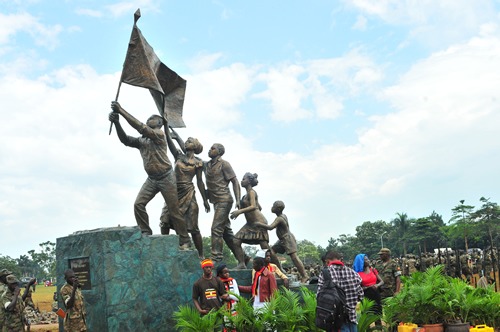 bracelets and molds. The most notable ones include Uganda crafts on Bombo roads, Maridadi Crafts on Nakasero road, craft market on Buganda road and national theatre craft center at dewton road.
bracelets and molds. The most notable ones include Uganda crafts on Bombo roads, Maridadi Crafts on Nakasero road, craft market on Buganda road and national theatre craft center at dewton road.
Monuments in Kampala: The different monuments in Kampala mark the different events that happened in the past but which shaped the development of Kampala and the entire Uganda. These include the independence monument close to Grand Imperial Hotel and Speke road. This monument marks Uganda’s independence in 1962 where a man is seen raising up a child through his hands. There are also other monuments like Kabaka Mutesa I monument (the first president of Uganda), the World War II monument, the education monument in Kyambogo and many more.
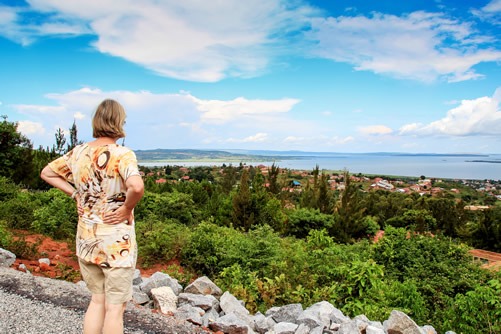 Lake Victoria: A large part of Kampala is found on the shores of Lake Victoria, the largest inland water body in Africa and the second largest in the world. Lake Victoria is blessed with fresh water, beautiful beaches and islands that attract a lot of local/international tourists. People go to these beaches, islands and resorts for swimming, partying, sunbathing, boat riding, fishing and other water sports. Some of the prominent beaches/resorts in Kampala include Ggaba beach, KK beach, Mulungo Kabaka’s recreation beach and Speke resort Munyonyo. High end accommodation facilities have sprung up where a visitor can stay and escape the stress of everyday life. There are also landing sites on the shores of Lake Victoria where tourists can enjoy a fresh fish right from the waters of the lake. These include Ggaba Landing site, Mulungo landing site and Port bell in Luzira.
Lake Victoria: A large part of Kampala is found on the shores of Lake Victoria, the largest inland water body in Africa and the second largest in the world. Lake Victoria is blessed with fresh water, beautiful beaches and islands that attract a lot of local/international tourists. People go to these beaches, islands and resorts for swimming, partying, sunbathing, boat riding, fishing and other water sports. Some of the prominent beaches/resorts in Kampala include Ggaba beach, KK beach, Mulungo Kabaka’s recreation beach and Speke resort Munyonyo. High end accommodation facilities have sprung up where a visitor can stay and escape the stress of everyday life. There are also landing sites on the shores of Lake Victoria where tourists can enjoy a fresh fish right from the waters of the lake. These include Ggaba Landing site, Mulungo landing site and Port bell in Luzira.
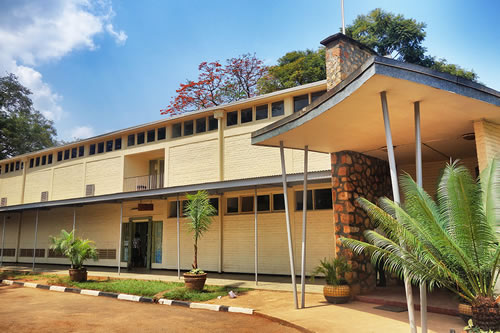 The Uganda National Museum: This is located on Kitante road and near the British High Commission. It was created in 1908 by the then British Colonial Officer George Wilson to keep the ancient artifacts of Uganda. The museums consist of music instruments, bows and arrow, rifles and spears that were used in the past by great personalities of Uganda. There are also accolades and medals of sport personalities, the noble men and women of Uganda. This is the largest and oldest museum in Uganda. Tourists visit the place to draw back on the past history of Uganda.
The Uganda National Museum: This is located on Kitante road and near the British High Commission. It was created in 1908 by the then British Colonial Officer George Wilson to keep the ancient artifacts of Uganda. The museums consist of music instruments, bows and arrow, rifles and spears that were used in the past by great personalities of Uganda. There are also accolades and medals of sport personalities, the noble men and women of Uganda. This is the largest and oldest museum in Uganda. Tourists visit the place to draw back on the past history of Uganda.
The Ndere Centre: This Centre was formed to entertain tourists through music, dance and drama from almost all the indigenous tribes in Uganda. The Centre is found outside the city center in a place known as Kisasi. The performing group is called the Ndere troupe. Tourists who are interested in authentic and raw art performance must visit the Ndere Centre.
Shopping Malls: There is a chain of large shopping grounds and centers in almost every part of Kampala. These usually have big and small stores within the main building. The stores or shops deal in different commodities. There is always a grocery or general merchandise supermarket, boutiques, banks, Forex bureaus, kids play ground, restaurants, cafes, fitness gyms and cinema halls. The major shopping malls in Kampala include Oasis mall in Centenary park, Acacia Mall at Kisementi, Freedom City on Entebbe road, Lugogo Shopping Mall and Tirupati mall in Kabalagala.
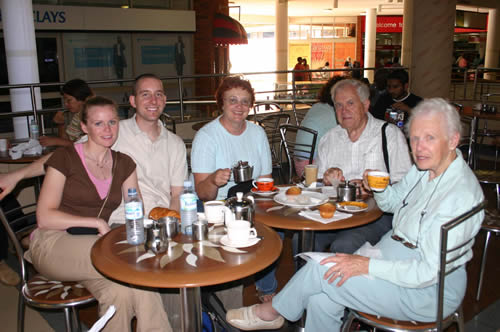 Restaurants and dine outs: One thing Uganda is known for is its organic delicious foods. As the capital, Kampala has restaurants and eateries in almost every corner. They offer a wide range of dishes but most prepare local meals. One cannot miss out on taking the matooke which is served with luwombo and complemented by a glass of fresh juice. There are also international restaurants that sell fast foods like KFC, Mr. Tasty, Café Javas, Java house and Food Hub. The most amazing thing is that food in Kampala is very cheap compared to other cities. A meal in Kampala can go as low as 2$
Restaurants and dine outs: One thing Uganda is known for is its organic delicious foods. As the capital, Kampala has restaurants and eateries in almost every corner. They offer a wide range of dishes but most prepare local meals. One cannot miss out on taking the matooke which is served with luwombo and complemented by a glass of fresh juice. There are also international restaurants that sell fast foods like KFC, Mr. Tasty, Café Javas, Java house and Food Hub. The most amazing thing is that food in Kampala is very cheap compared to other cities. A meal in Kampala can go as low as 2$
Cafeterias: Uganda is one of the leading coffee growing countries in the world. Her coffee is very organic with no foreign bean boosters. They are two types of coffee beans grown in Uganda and that is the Arabica and corona coffee. They are the ones served in coffee shops all over Uganda. Coffee can be served from specific coffee shops or in restaurants that sell coffee as part of the overall menu. The coffee shops in Kampala include wild coffee bar, 100 cups coffee house, Endiro coffee and coffee pap to mention but a few. A cup of coffee is always good for starting up and ending your day.
Kampala Nightlife experience: The nightlife in Kampala is one of the star highlights of a city tour. Kampala is known for being very alive in the dark. The city is regarded as the Las Vegas of Africa. People are always moving in the streets and partying like there is no tomorrow. In every corner of Kampala, there is a night spot for people to have fun. However, it should be noted that not all of the spots are safe to go to because of the brawls and theft. It is advisable for one to go to the more upscale nightspots since they have few hooligans. These hangouts spots have all that a reveler would need from the beautiful ladies, ice cold beers, a dance floor, good international/local music and fast foods/snacks. Some of the night spots include Club Guvernor in industrial area, Club Ambience in Bakuli, Club Milano in Makindye, Fame lounge, Wave lounge, O’learys bubble and Wink along Acacia road to mention but a few.
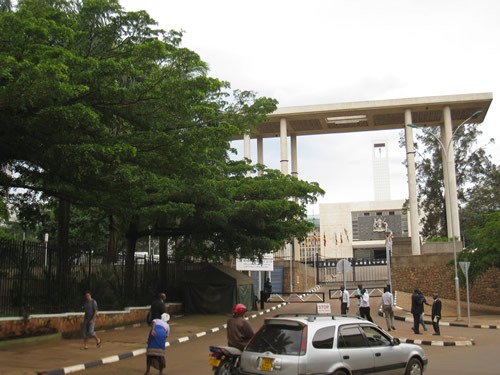 The parliament of Uganda Building: This is a massive beautiful building in upper Nakasero, near Serena hotel. This is where congressmen handle the political matters of the country. This legislative building is open to the public for tours and learning about how policies/laws of Uganda are made. There is a public gallery where the public sits to listen to what the members of parliament are discussing. The parliamentary sessions are usually conducted between 2 to 4pm on Tuesday and Thursday but when there are urgent matters it can any time of the week.
The parliament of Uganda Building: This is a massive beautiful building in upper Nakasero, near Serena hotel. This is where congressmen handle the political matters of the country. This legislative building is open to the public for tours and learning about how policies/laws of Uganda are made. There is a public gallery where the public sits to listen to what the members of parliament are discussing. The parliamentary sessions are usually conducted between 2 to 4pm on Tuesday and Thursday but when there are urgent matters it can any time of the week.
Festivals: These festivals are not much of a popular thing in Kampala but they happen here and there. The festivals are normally about unleashing a new product or event in town. The most notable festivals in Kampala comprise of the Kampala city festival which occurs in October. This is all about Kampala people having fun and celebrating their city. There are always performances from top stars in the country, sale of food stuffs and some crafts. The amakula international film festival is one of the events organized in Kampala where African drama and visual content is celebrated and promoted. The event is organized at the Uganda national museum.
Makerere University: Makerere was established in 1922 as the first higher institution of learning in both Uganda and the entire Africa. Makerere University is highly regarded in the world due to its great 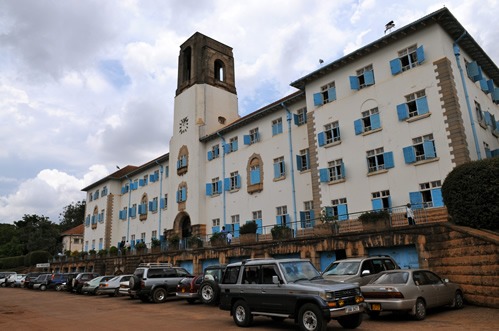 contribution in knowledge and producing some of Africa’s greatest minds. The university is located at Makerere Hill which is 3 kilometers away from the city center. Makerere is a large institution with almost every education department – education, technology, art, agriculture, science, business and health services. Some powerful people from Africa have attended the university and these include former president of Uganda Dr. Milton Obote, Julius Nyerere of Tanzania, Benjamin Mkapa of Tanzania, Joseph Kabila of Congo and Mwai Kibaki of Kenya. The university has amazing buildings to view, a serene environment with some wildlife species like monkeys and birds. It also has some restaurants and a guesthouse for the visitors.
contribution in knowledge and producing some of Africa’s greatest minds. The university is located at Makerere Hill which is 3 kilometers away from the city center. Makerere is a large institution with almost every education department – education, technology, art, agriculture, science, business and health services. Some powerful people from Africa have attended the university and these include former president of Uganda Dr. Milton Obote, Julius Nyerere of Tanzania, Benjamin Mkapa of Tanzania, Joseph Kabila of Congo and Mwai Kibaki of Kenya. The university has amazing buildings to view, a serene environment with some wildlife species like monkeys and birds. It also has some restaurants and a guesthouse for the visitors.
Mulago Hospital: This is Uganda’s main referral hospital and is located in Mulago hill. Mulago hospital is the oldest and largest hospital in the country. It started as a mere treatment clinic in 1913 and expanded into a hospital in the 1950s. Mulago Hospital having partnered with Makerere University and the school of medical health care is located at the hospital premises. Mulago produces and has the best doctors in the East African region. A visit to the hospital is therefore a must for those who are interested in medical research.
Recreation Centers: Kampala is a city of fun. There a number of recreation centers where families go to hangout and have a good time as they strengthen their family bond. These are not only for families but also for individuals considering that they all tend to have gardens, bars and restaurants. The recreation centers in Uganda normally have a kid’s themed park, a swimming pool, a bar, a restaurant and also gardens for relaxations/picnics. Some of the famous recreation centers in Kampala include Kiwatule Recreation Centre, Noah’s Ark Gardens, Disney Kids’ Play Park, Forest Resort Park, Hippoz Recreation Centre and Day Park.
Lugogo Show Grounds: Being a commercial and business center of Uganda, there had to be a trade show ground in Kampala. The Lugogo show grounds took up the mantle. This is a center where business entities and people come to showcase their products and brands to the would-be customers. There are also international and local trade shows and exhibitions held at this venue and the most popular one is the Lugogo trade show that takes place every October of the year – Around the independence week in Uganda.
Commonwealth War Veterans’ Cemetery in Nakawa: This is a historical burial site where the fallen heroes and soldiers of the colonial time were buried. The graveyards are constructed with marble stones and each soldiers name, achievement and rank is indicated. The cemetery receives a handful of visitors who feel indebted for the great sacrifice made by these men in keeping the country and world at peace. The cemetery is located between Lugogo show grounds and Bugolobi Trading center.
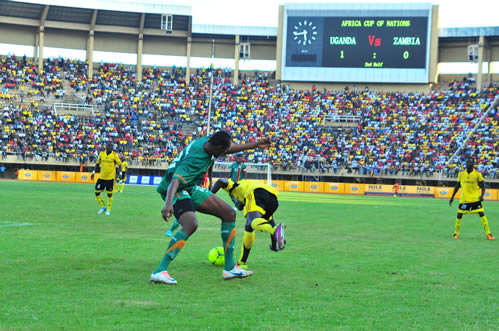 Sports Grounds: Kampala is a city sports lovers. Most of the dominant sport teams and structures are all found in Kampala. Kampala has Nambole national stadium soccer and other games. There is also star times football stadium which is the official playground for KCCA football club while Wankuluku stadium is the home ground for Express FC. Soccer is the most popular game in Uganda and because of that there is always a traffic jam as fans go to attend matches. There are also playgrounds for other games like the Kyadondo rugby grounds, legends rugby ground, Cricket oval Lugogo, hockey grounds Lugogo and Kololo boxing Arena.
Sports Grounds: Kampala is a city sports lovers. Most of the dominant sport teams and structures are all found in Kampala. Kampala has Nambole national stadium soccer and other games. There is also star times football stadium which is the official playground for KCCA football club while Wankuluku stadium is the home ground for Express FC. Soccer is the most popular game in Uganda and because of that there is always a traffic jam as fans go to attend matches. There are also playgrounds for other games like the Kyadondo rugby grounds, legends rugby ground, Cricket oval Lugogo, hockey grounds Lugogo and Kololo boxing Arena.


